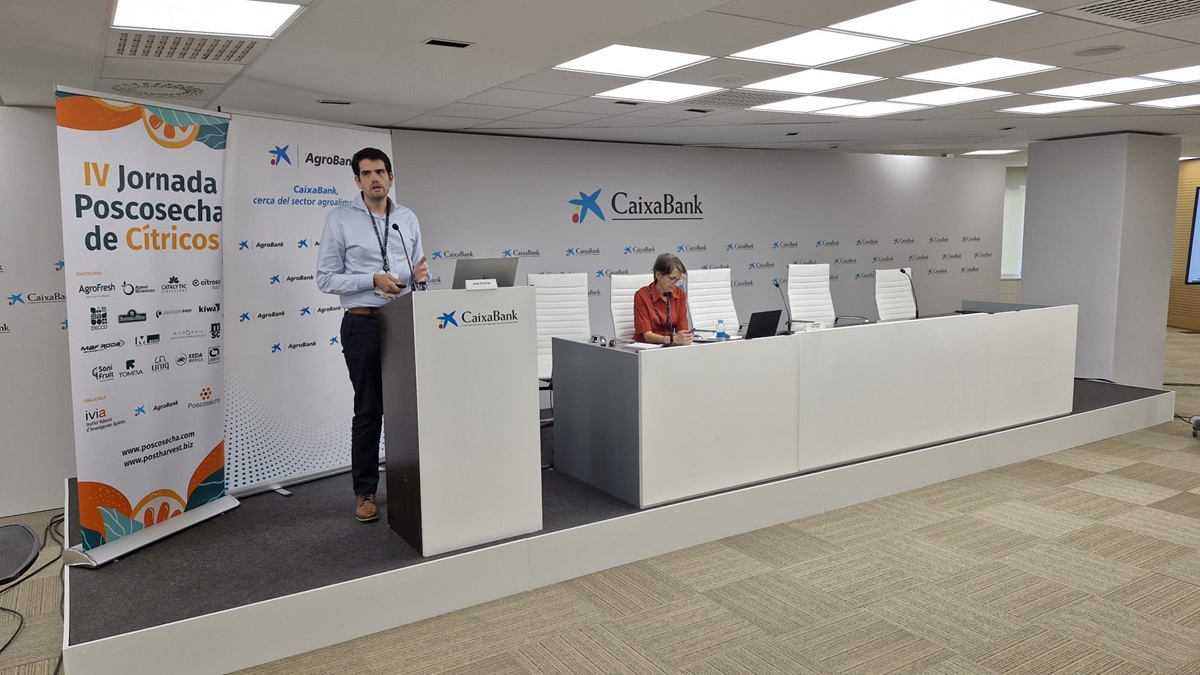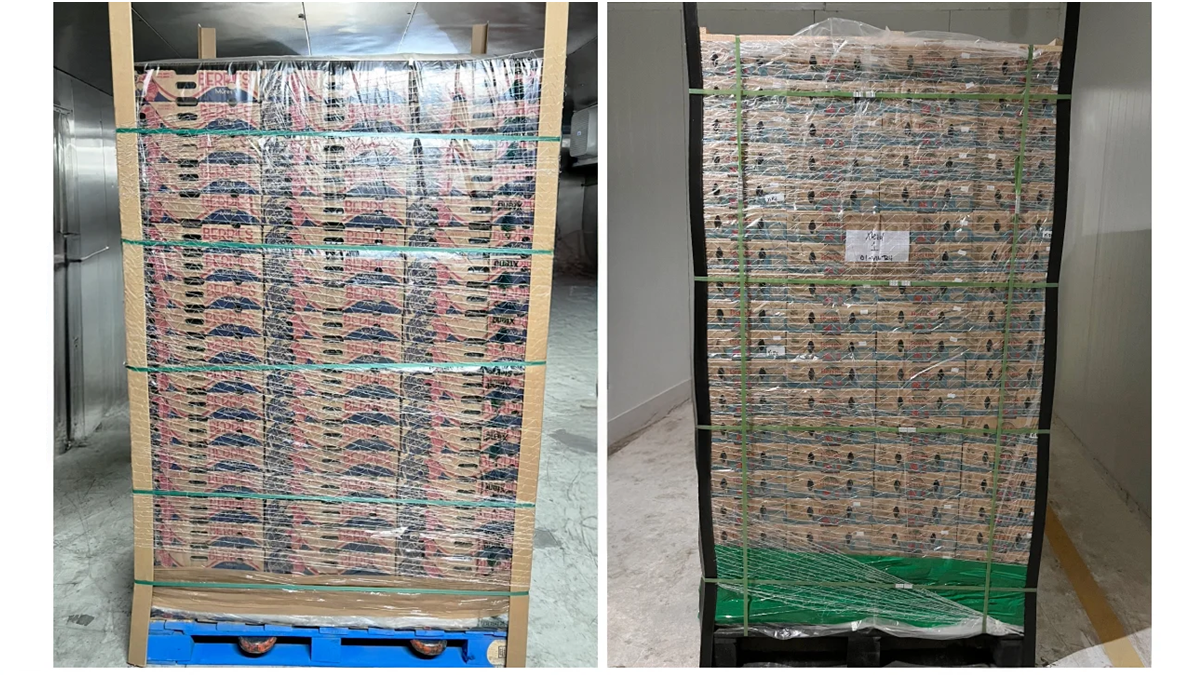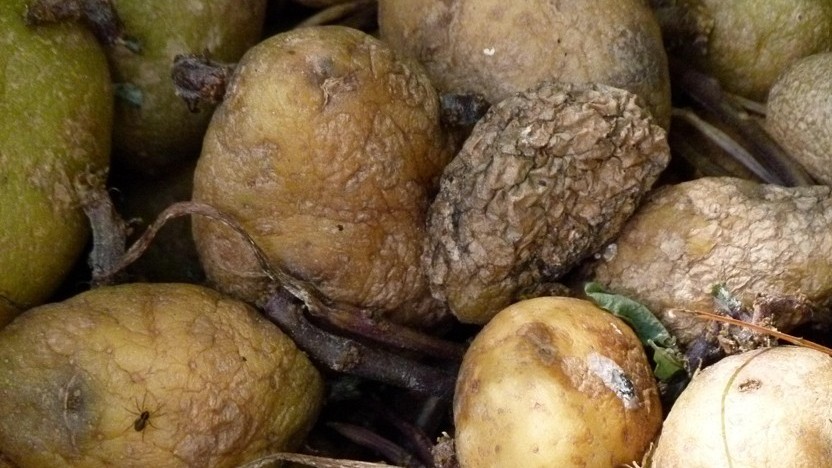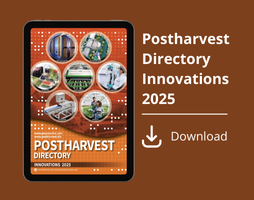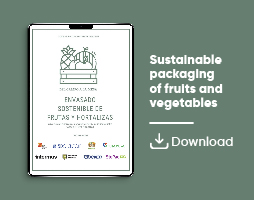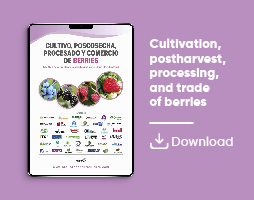Actualidad
Review of New Strategies for Managing Postharvest Diseases
The Open Access paper, by Q. Ullah et al. analyzes innovative strategies for fruit and vegetable postharvest disease management
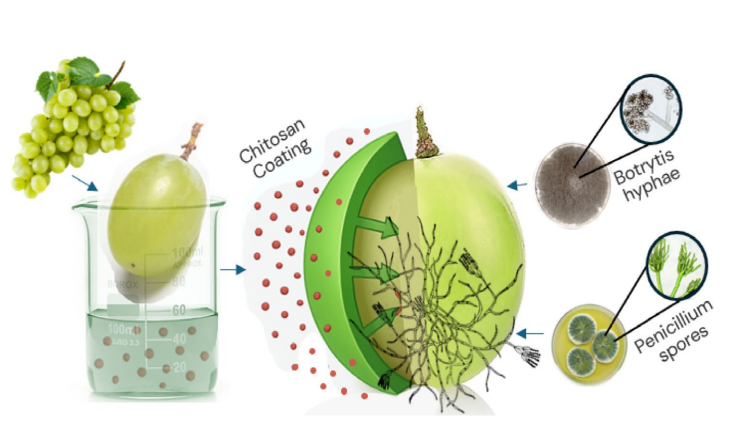
Redaccion
Postharvest diseases, driven by necrotrophic fungi such as Botrytis cinerea, Penicillium digitatum, and Rhizopus stolonifer, pose a significant threat to global fruit and vegetable supply chains, resulting in annual losses of 20%–40% and economic impacts exceeding $10 billion.
This review critically evaluates
- innovative, sustainable strategies for biological control,
- nanotechnology,
- edible coatings, and
- plant growth regulators (PGRs)
to mitigate these losses, emphasizing their mechanisms and efficacy.
Biological agents like Bacillus amyloliquefaciens and Pseudomonas fluorescens reduce disease incidence by 60%–85% through volatile organic compounds (VOCs) and nutrient competition.
In comparison, selenium-chitosan nanoparticles (Se-ChNPs) achieve a 92% inhibition of B. cinerea in grapes via ROS induction and cell wall disruption.
Chitosan and alginate-based edible coatings prevent decay by creating physical barriers and increasing host enzymes: SOD by 68%.
PGRs SA and MT trigger enhanced PAL and PR genes and reduce the disease by 55%–80%.
Integration augments all these effects, and Se-ChNPs and cold storage give a synergy ratio of 76%–94% because of multiple target suppression and host defense potentiation.
However, there are some limitations which are as follows: During the use of Se-ChNPs, cost plays a critical role; specifically for the efficacy of Se-ChNPs, they work well on grapes only.
In terms of regulation of residues, they do not have the proper regulation for the nanoparticles; but to balance all these critical issues, biosensors and protocols should be used for the crops.
This document critically compares the different strategies, reviews their successes and faults for each crop, looks into contrasting findings, and highlights major areas that need
further study, such as applying them to vegetables and dealing with regulations. Priorities for future research include developing low-cost solutions and testing a wide range of crops to improve the sustainability of postharvest management and meet the demands of the global food supply.
Introduction
Postharvest diseases cause a major threat to the supply of food produced around the world, and the deterioration of fruits and vegetables during storage and transportation results in huge economic losses. The breakdown of the demand and supply relationship for the fruit means that deadly fungi like Botrytis cinerea, Penicillium digitatum, necrosis, and Rhizopus stolonifer may lead to a decrease in the marketable yield of susceptible crops under unfavorable conditions by up to 30%–50% (Romanazzi et al. 2018). For instance, B. cinerea, which is a primary pathogen of gray mold, alone attacks more than 200 plant species, and the annual loss in grape yield is estimated to be between 20% and 25% in some parts of the world according to Dean et al. 2012.
The establishment of these fungi, like Aspergillus species, produces mycotoxins, for instance, ochratoxin A, which worsens the situation regarding food safety because some of the fruits stored reach mycotoxin levels above the permissible limit of 2μg/kg (Battilani et al. 2006).
The above losses have, in the past, been managed using chemical methods, namely synthetic fungicides; however, they have proved ineffective because of the development of resistance among the pathogens and adverse effects on the environment.
According to research carried out, the frequent application of fungicides increases the level of resistance among P. digitatum populations to as much as 70% within 5years of the method's usage (Holmes and Eckert 1999). Such residue levels reaching up to the maximum allowable limit of the chemical in fruits, including citrus, have attracted regulatory actions and customer repulsion (Sivakumar et al. 2016). This has led to a shift and adoption of sustainable and eco-friendly approaches to control disease while at the same time improving plant innate resistance, as the global population is expected to reach 9.7 billion people by the year 2050, which will require at least a 70% increase in food production (FAO 2017). In this review, these techniques are compared in terms of their methods (e.g., using ROS vs. removing nutrients), how effective they are in different settings, and several practical factors (e.g., how much they cost and their applicability on a large scale). We discuss the different ways biological agents are used, such as poor performance in the field, and point out where researchers are still missing the mark,for example with vegetables, to plan for better solutions.
This review comprehensively evaluates innovative, sustainable strategies: biological control (bacteria and yeasts), nanotechnology (diverse nanoparticles), edible coatings, and plant growth regulators (PGRs) for managing postharvest diseases in both fruits and vegetables. By synthesizing mechanisms, efficacy, and limitations, we aim to address global food security challenges while highlighting applications across diverse crops (Ikram et al. 2024).
The primary objective is to assess the efficacy and underlying mechanisms of these innovative strategies, drawing on quantitative evidence to highlight their potential and limitations.
Biological control agents, while effective in reducing P. digitatum spore germination by 85% in some trials, face challenges in scalability due to their dependence on rapid colonization, which drops to 40% efficacy under fluctuating storage conditions (Droby et al. 2009). Nanotechnology-based solutions, such as Se-ChNPs, exhibit remarkable antifungal activity—reducing lesion diameters by 73% compared to chitosan alone— but their application is currently limited to specific crops like grapes, raising questions about broader adaptability (Salem et al. 2022).
A secondary goal is to identify gaps and propose future directions. The integration of Se-ChNPs with cold storage, for instance, extends shelf life by 14–21 days beyond traditional methods, yet the cost of nanoparticle synthesis (estimated at $5–$10/kg) may hinder commercial adoption (Youssef et al. 2019). Similarly, while SA treatments elevate total phenolic content by 28% in treated fruits, their phytotoxic effects at concentrations above 2 mM warrant further investigation (Zhang et al. 2021). This critical analysis is an effort to marry research findings with their application in cases, which have revealed the desperate need for the improvement of postharvest management.
Contents
2 Scope of the Review
4 Postharvest Pathogens and Losses
3 Critical Insights and Broader Implications
5 Common Postharvest Pathogens
6 Specific Pathogenic Challenges
7 Factors Influencing Disease Development
8 Pathogen Biology and Host Interactions
9 Economic Implications
10 Critical Perspective
11 Biological Control Strategies
11.1 Microbial Antagonists: Bacterial Agents
11.2 Microbial Antagonists: Yeast-Based Solutions
12 Mechanisms Driving Antagonistic Activity
13 Synergistic Approaches With Biochemical Enhancers
14 Critical Analysis of Efficacy and Limitations
15 Broader Implications and Research Gaps
16 Nanotechnology-Based Interventions
16.1 Nanoparticles in Disease Control: Chitosan-Based Systems
16.2 Nanoparticles in Disease Control: Specialized Applications
17 Mechanisms: ROS Induction and Cell Wall Disruption
18 Mechanisms: Targeted Delivery and Host Interaction
19 Critical Evaluation: Advantages and Scalability
20 Critical Evaluation: Risks and Regulatory Concerns
21 Future Directions and Broader Implications
22 Edible Coatings and Their Role
22.1 Types and Composition: Polysaccharide-Based Coatings
22.2 Types and Composition: Protein and Lipid Variants
23 Mechanisms of Action: Barrier and Antimicrobial Effects
24 Mechanisms of Action: Enzyme Induction and Host Defense
25 Enhancement With Additives: Probiotics and Essential Oils
26 Critical Insights: Sensory Impact and Practical Challenges
27 Broader Implications and Research Needs
28 Plant Growth Regulators (PGRs) in Disease Resistance
28.1 Key PGRs: Melatonin and Salicylic Acid
28.2 Key PGRs: Methyl Jasmonate and Emerging Candidates
29 Mechanisms: Induction of Defense Genes
30 Mechanisms: ROS Scavenging and Enzyme Activation
31 Synergistic Effects: MT and NO/ROS Pathways
32 Critical Analysis: Dose Dependency and Efficacy
33 Critical Analysis: Practical Challenges and Variability
34 Integrated Approaches and Synergies
34.1 Integration Between Nanotechnology and Physical Methods
35 Mechanistic Insights: Multi-Target Pathogen Suppression
36 Mechanistic Insights: Host Defense Enhancement
37 Supporting Data for Equation 2 (*)
38 Critical Evaluation: Cost-Effectiveness and Implementation
39 Critical Evaluation: Practical Challenges and Variability
40 Challenges and Future Directions
40.1 Current Limitations: Scalability and Cost Barriers
40.2 Current Limitations: Regulatory and Specificity Issues
40.3 Emerging Trends: Biosensors and Precisión Agriculture
40.4 Emerging Trends: Genetic Engineering for Resistance
40.5 Recommendations: Standardized Protocols and Broader Applications
40.6 Future Outlook: Balancing Innovation and Feasibility
Conclusion
Nanotechnology and biological control coupled with edible coatings and PGRs provide a suitable approach toward the postharvest diseases of fruits and vegetables, especially those attributable to B. cinerea and P. digitatum infections. Two examples with such a combination are the Se-ChNPs with cold storage causing up to 90%–95% reduction in grape decay through an increase of 68% SOD and the destruction of fungal cell walls and biocontrol agents like Bacillus amyloliquefaciens incorporated in chitosan coatings, with souring up to 85% of P. digitatum through VOCs and nutrient antagonism.
Some of the potential control methods of postharvest diseases include edible coatings with added materials like thyme oil, reducing Colletotrichum gloeosporioides rot in mangoes by 92%, while plant growth regulators, including salicylic acid (SA), increase phenolic compounds by 28% in Goji berry, thus reducing decay by 70%. These interventions have, therefore, been designed to improve the quality of storage by
eliminating the efficiency of the pathogens and increasing the immune capacity of the host more than each of them doing by 20%–40%. But their popularity is also dependent on high costs ($5–$10/kg for nanotechnology), variation (50% degradation at 25°C), and legal issues; it is a future of cost-efficient formulations and precision agriculture for fruit supply chains.
Tables
1 - Microbial antagonists and their mechanisms of action)
2 - Nanoparticles and their effects on postharvest pathogens.
3 - Edible coatings and their impact on postharvest disease management
4 - Plant growth regulators and induced resistance mechanisms
(*) Equation (2): Synergistic Disease Resistance Model Quantifies synergy (S) as the percentage ratio of the combined effect (EA+B) of two treatments (e.g., Se-ChNPs+cold storage) to the sum of their individual effects (EA+EB).
Figure is Fig 2 of the original paper - Mechanisms of edible coatings on a grape for postharvest disease control. The diagram illustrates a 3D cross-sectional view of a grape coated with chitosan, showing g the barrier effect by blocking Penicillium spores and the antimicrobial action. Inspired by Bautista-Baños et al. (2006) and Wang, Li, et al. (2021).
Source
Innovative Strategies for Postharvest Disease Management in Fruits and Vegetables: A Comprehensive Treatise
Qudrat Ullah, Muhammad Waqar, Nimra Sajjad, Farhang H. Awlqadr, Muhammad Tayyab Arshad, Sammra Maqsood, Kübra Sağlam, Nimra Maqsood, Md. Sakhawot Hossain, Ali Ikram, Thanet Khomphet & Kodjo Théodore Gnedeka1
WILEY, Food Science & Nutrition, Open Access
https://onlinelibrary.wiley.com/doi/pdf/10.1002/fsn3.70850


